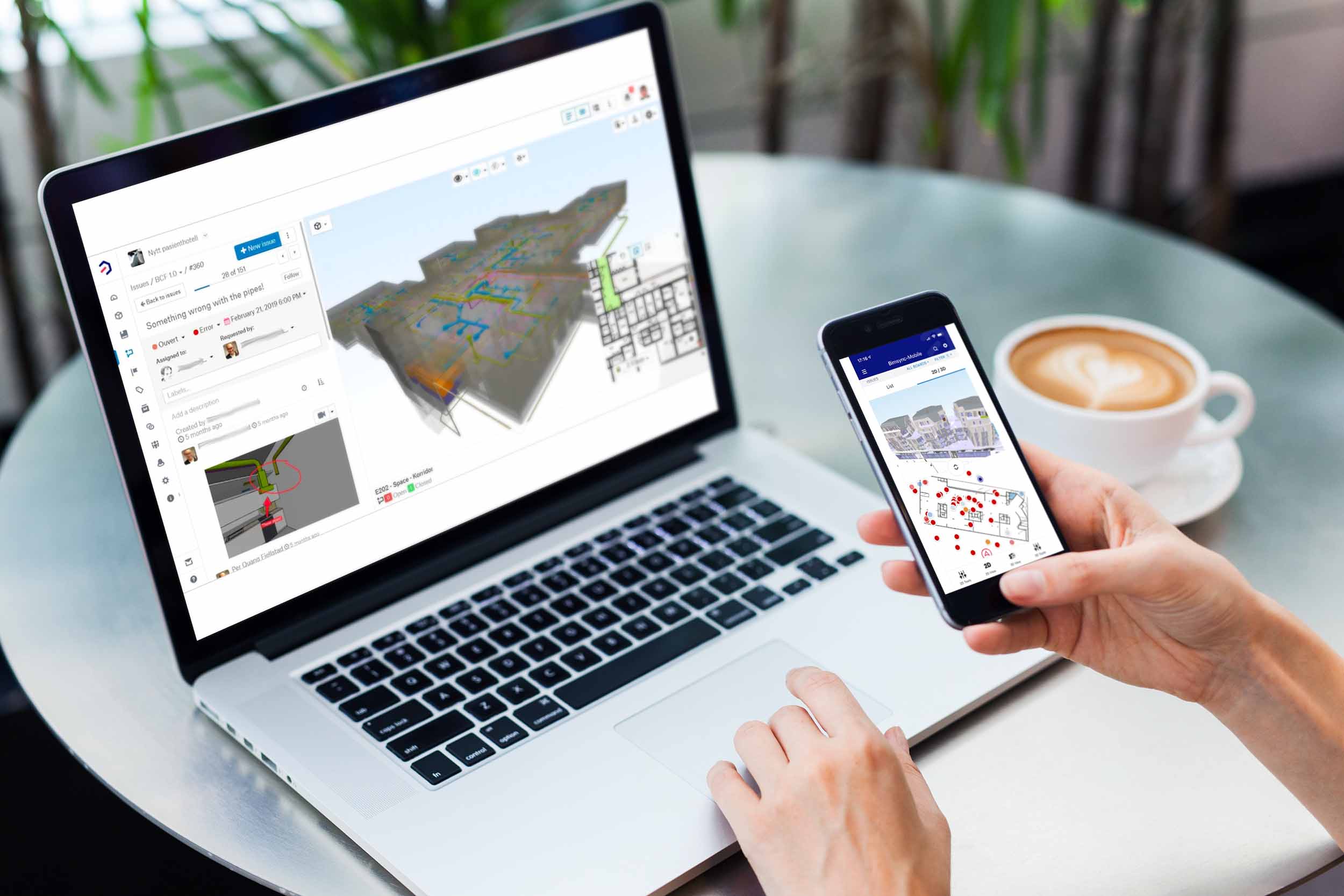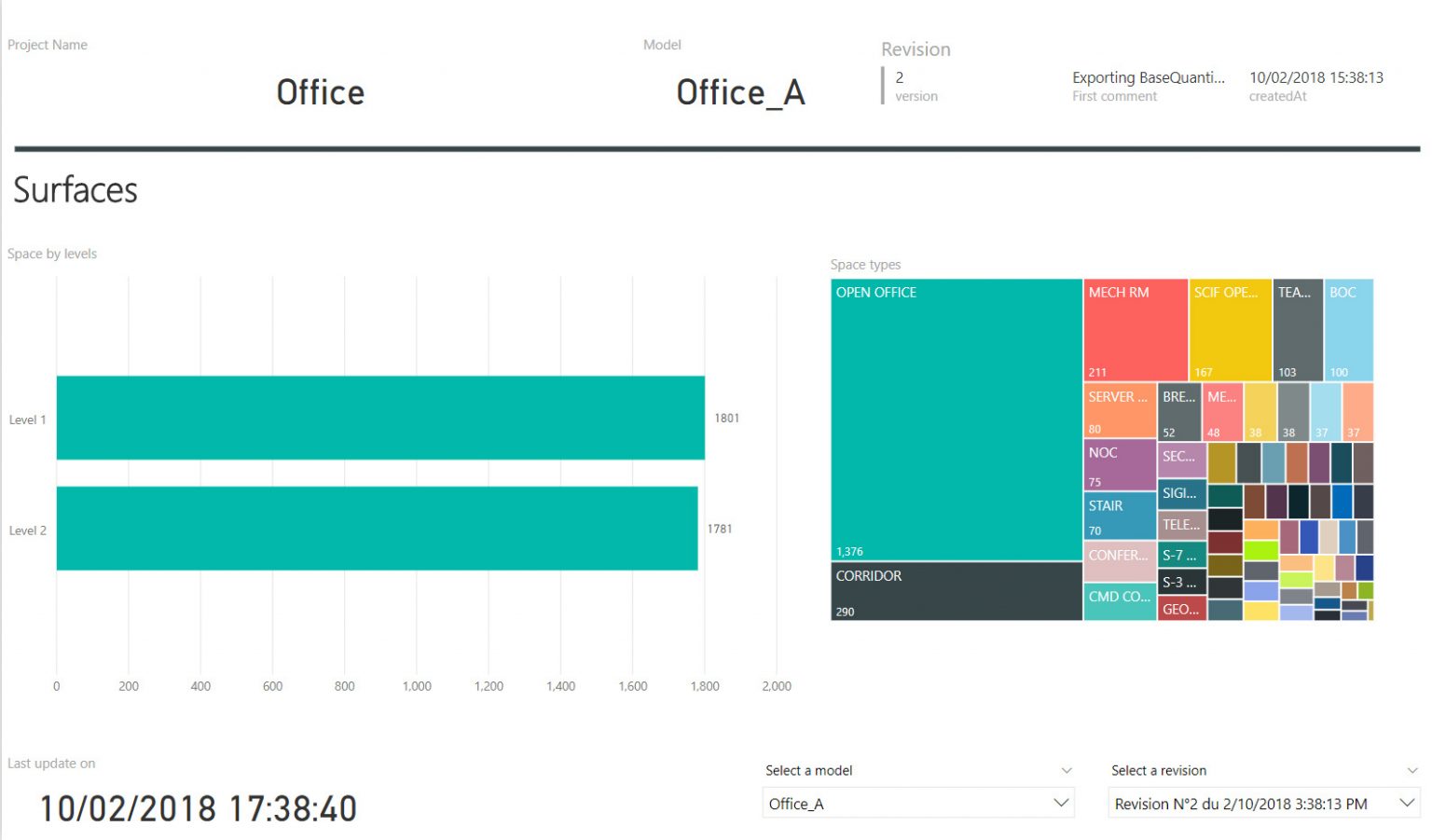The construction industry is notorious for being slow to adapt. While AI and robotics promise efficiency gains, a more fundamental shift is on the horizon. The power of “Open” – open data, open collaboration, and open standards – has the potential to disrupt the industry in a way that automation simply can’t. This article dives into why the power of Open can disrupt the construction industry in a much stronger manner than AI and Robotics.
Technology Revolutionizing the Construction Industry: AI, Robotics, and Beyond
AI: A Game-Changer for Design and Project Productivity
Artificial Intelligence has come of age. The impressive performance of various AI-based products out there, seem to have almost God-like powers, causing a lot of stir in the media. As a software vendor in the construction industry, we are also working hard with this technology and will soon come out with our own AI-based products. These enhancements will delight our users and unleash some incredible productivity gains.
Some of the AI ideas are looking at ways AI can do some of the design needed to build something for us. Improving productivity and allowing subject experts to focus much more on their real expertise to ensure higher quality built assets, designed in a shorter time. Other ideas involve getting to the data you need even faster, using a more human-friendly interface, like human language, to access exactly what you need. Probably our fantasy is our only limitation in terms of thinking of ways AI can improve the entire construction industry. Exciting times are ahead.
Robotics: Filling the Workforce Gap in AECOO Business
Robotics is also one technology that has some disruptive potential when it comes to the construction industry. For example, in Japan, several hundred general contractors have come together to create a consortium that will develop robots for the construction site. The reason why competitors are helping each other is the common understanding that Japan’s aging population will lead to a massive shortage of workforce on the construction site. The only way to counter this is to develop robots that can take over some of the typical site jobs.
AI and Robotics: A Combination for a Powerful Future?
Combining robotics with AI seems to create something that potentially can be very powerful, and perhaps much more disruptive. Tesla is working on a humanoid robot that will use visual sensors, like a camera, to navigate our world, just like we do, and AI will power that navigation. A bunch of fully working Tesla robots on site, might be very helpful.
However, there is one thing that we believe is even more powerful than AI or robotics, or even the combination. This power will probably disrupt our construction industry much more, to something much better than what we have today.
Open Collaboration: An Even More Powerful Force
What are the Challenges of Collaboration with Fragmented Interests in Construction Management?
The construction industry is ancient and organized very similarly today as it was thousands of years ago. This has worked well, and humanity has been able to build a lot of assets helping our society to prosper and create value for everyone. However, it is time to look at one aspect of this construction industry and see if we can inject some positive innovations, based on how our cultures have advanced together with technology.
I am talking about the power of “Open”.
Today, in any construction project, there are several roles. Typically you have the owner, the client, paying for the project. This can be a private client or a public client. The client may contract several specialty contractors and manage the construction project themselves, but more and more a client will hire a General Contractor to simplify its own interface to the project. Then the General Contractor will hire subcontractors, or speciality contractors, in order to enlist enough expertise on all the different trades, to finish the construction project with high enough quality.
However, each stakeholder in this setup will optimize for their own business. These key players may not necessarily see a benefit in working in a way that benefits the construction project as a whole, but will work in a way that benefits themselves. Naturally. It is actually their duty to their owners to maximize profit, and not necessarily make the overall project the best it can be. Part of this reason is the way the contracts work. But the contracts are designed this way for a good reason. They all try to protect a possible downside and ensure some kind of structure when disagreements arise. And disagreements in this kind of environment, when everyone tries to optimize their own agenda, usually end up on a lawyers desk, so the contracts are the way they are for a number of complicated reasons.
This siloed approach, where each participant prioritizes their own interests, creates significant challenges for collaboration in construction management. As a result, projects often suffer from rework, delays, cost overruns, and communication breakdowns. By embracing open collaboration, shared data, and collaborative tools, the industry can move beyond these limitations and unlock a new era of positive impacts, efficiency and success.
Beyond Contracts: Building a Collaborative Future for Construction
Imagine if you could much better align the interest of each individual stakeholder in any construction project. Implement incentives that encourage each participant to optimize for the whole project. This would automatically open up the whole process. Instead of everyone trying to make sure they get what they expect, through focusing only on their own work, everyone is trying to make sure the entire construction project is delivered perfectly, and helping each other to make sure that happens. Everyone would collaborate and share data automatically, everyone would communicate much more freely, as everyone’s interest is the same: Make the whole project perfect, not just optimized for their own contract. This, of course, hinges on aligning the interest of everyone involved, better than what is done today.
Open Collaboration Solutions for Dynamic Project Success
Integrated Project Delivery (IPD) is a way to try to resolve this. From what we see in real construction projects, this does not work as well as intended. Probably because the model tends to be static. The incentive configuration is done at the start of the project, but never changed. However, construction projects encounter events that may cause the original incentive configuration to be misaligned and then we are back to square one. The incentive setup needs to be dynamic.
There are two approaches to get here, and we need to do both at the same time. One is to start being open in our thinking. This includes the choice of technology. Choose tools that encourage sharing, making data in the construction project more accessible and thus easier to make informed decisions that not only benefit each stakeholder but also the entire project. The other is to look at how the incentive models today work. Make them dynamic, and align them to the construction project itself.
It is clear that if everyone shared data and worked together to reach a common goal, each project in our construction industry would achieve higher goals and be better for everyone. The power of open is so powerful that it may even surpass the potential for AI and Robotics. Combined.
What is the Power of Collaboration and Why is it important in Construction?
The construction industry is at a crossroads. While AI and robotics offer efficiency gains, a more fundamental shift lies ahead. Open collaboration, with its emphasis on shared data, transparent communication, and open standards, holds the potential to revolutionize construction in a way that automation simply cannot.
While AI and robotics represent exciting advancements, fragmented information and misaligned incentives can hinder their effectiveness. In contrast, open collaboration fosters a unified approach. By breaking down silos and promoting transparency, stakeholders can work together towards a common goal – project success.
The power and benefits of open collaboration extend beyond individual projects. By establishing open standards and fostering a collaborative industry culture, construction can achieve:
- Improved project predictability: Standardized processes and shared knowledge lead to more accurate project planning and execution.
- A more skilled workforce: Open collaboration and knowledge sharing platforms can empower workers and bridge the talent gap.
- Enhanced sustainability: Collaboration allows for the integration of sustainable practices throughout the building lifecycle.
In conclusion, while AI and robotics hold promise for the future of construction, open and seamless collaboration is the key to unlocking the industry’s true potential. By embracing openness, we can create a construction industry that is efficient, innovative, and built for the future.




